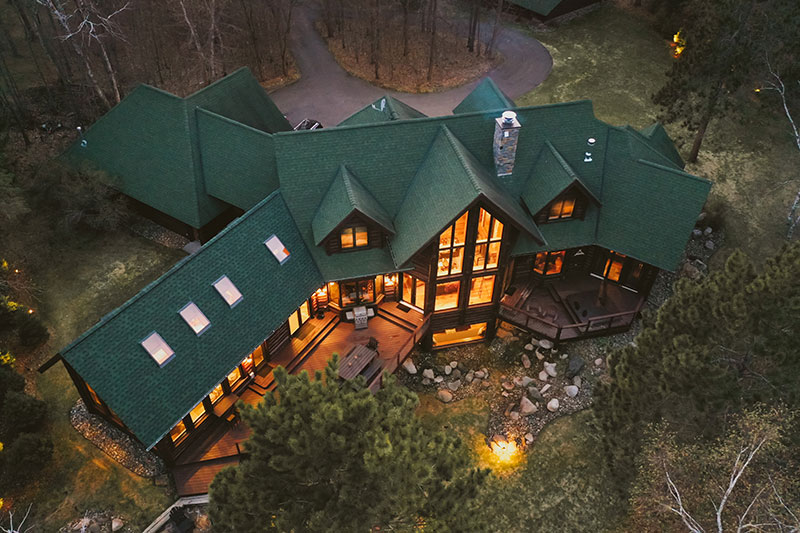Advertisement
Today, Minnesota has no reason to fear macroeconomic turmoil, as it is still far from manifesting locally. While housing trends around the country are all over the board, Minnesota enjoys a relatively resilient market. From what we know, judging by recent market analysis, the slowdown at hand may be on par with historical seasonal patterns. If that is the case, we may be up for a strong reversal with the arrival of spring next year.
According to a Redfin report, home prices during September were 4.9% higher than last year. Nevertheless, the number of listings is down 9.09%, and there is a notable decrease in the number of homes sold. Interestingly, properties spend less time on the market, with an average of 23 days, which is a historical precedent considering the season.
Current Trends and Developments
Prices are growing disproportionately across several metro areas, including Shakopee, Rosemount, Zimmerman, Hutchinson, and Gold Valley. Conversely, the supply is relatively diminished compared to last year.
One interesting state – pricing trends and supply statistics get equal distribution across several real estate types. To this end, we see similar developments on the residential front for townhomes, single-family houses, and condos.
Across all property types, year-over-year pricing increased, but when the homes sell, they sell for less than the listing price. Currently, 37.7% of homes are sold for less than the asking price, and 38.1% have a price drop. Again, the statistics apply equally to all types of residential real estate in Minnesota. Although home prices are higher than last year at this time, they are selling for less than sellers initially hoped.
New homes in Minnesota follow the same trend. The overall supply of brand-new homes is staying about the same overall. Nevertheless, irrespective of market developments, renowned homebuilders like LGI Homes and others are developing affordable properties across the state, working to increase the supply.
As of this writing, the supply of homes in Minnesota is about 5.5% lower than last year’s.
Renting Versus Buying
On the rental front, we see an 8.8% increase in the median asking price. Experts have differing views on whether or not this trend might remain stable in 2023, as post-pandemic housing behavior is hard to predict. As more Americans return to work, they may move out of their parent’s home and look for a rental, but it’s too early to speculate on next year’s rental market.
Income to Mortgage and Supply
According to Homebuyer, the current income-to-mortgage ratio is 13.71% which puts Minnesota in a favorable position compared to many other states.
Nevertheless, seniors are concerned about disruptions to the supply chain, material costs, and labor shortages. For this reason, developers, managers, and brokers will address current issues at the 16th annual Senior Housing Summit hosted by the Minnesota Real Estate Journal.
Minnesota Has a Thriving Job Market
While analyzing real estate trends, it is vital to consider other factors that play a role in market appreciation. Overall, job stability and cost of living influence the demand for properties, directing several outcomes, such as sales and rental prices.
Currently, there is a high need for worker replacement in occupations such as registered nurses (19,786), nursing assistants (19,172), accountants (16.359), and farmers (24,808). Metros across the state offer lucrative benefits and competitive salaries to lure talent, as the economic outlook for the area looks promising.
Positive net migration with a high inbound flow helps keep Minnesota competitive. Due to low crime rates, economic prosperity, and affordable housing, Minnesota enjoys an influx of residents each year. Still, the population stays the same when considering the families that leave. Since families move to Minnesota as often as others go, the state enjoys relative stability.
Urbanism and Development Across the State
While the largest city in Minnesota scores high under several criteria, the rest of the state is lagging. However, compared to neighboring areas, the average populated center in Minnesota is still relatively well off.
The Land of ten thousand lakes maintains 67 state parks, nine state recreation areas, and 23 state trails within its park system. These public spaces total approximately 267,000 acres with equal distribution across the map. Plus, nearby states rank much lower if we look at the average walking, transit, and biking score.
In addition, the state pledges to work harder to minimize traffic burden and reduce emissions as lawmakers propose new clean-air standards.
Overall, Minnesota should remain attractive for the foreseeable future. We will likely see market fluctuations – especially in the current economic environment, but we can’t predict the future. Home prices could continue to decrease slightly, but we’ll likely end the year ahead of 2021. Overall, any negative impact should be minimal. Still, given the current supply of homes, the strong economy, and immigration to the state, Minnesota real estate could emerge from this hectic period in a relatively good position.
Let’s see how 2022 ends and the new year begins.

